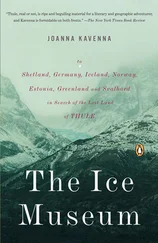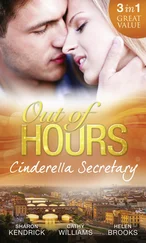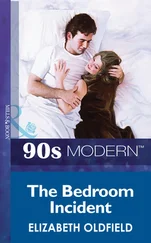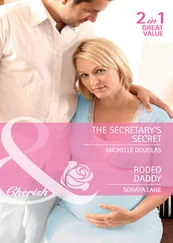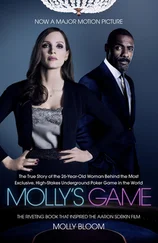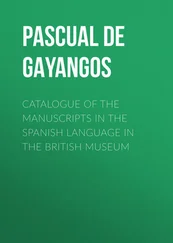In 1958, the University of Bahia restored the convent and church and turned it into the Museum of Sacred Art, exhibiting art belonging to the church, and 500 treasures belonging to Brazilian and Portuguese museums, churches, convents and brotherhoods in Brazil. During the restoration, the cross was found in the ground. The restorers were overcome with pleasure at finding the buried treasure and carefully cleaned and polished it until it shone like new. They put it on display in the museum. However, within ten years, the area around the monastery went downhill and became rough and dangerous, so the cross was taken out of the public galleries and hidden away for safekeeping. There is still plenty to see in the museum itself: 1,500 pieces of sacred art from the seventeenth and eighteenth centuries are displayed in the rariefied atmosphere of the monks’ quarters, with a view of the glittering sea. You can see the first fresco painted in Brazil: a lotus flower with a female figure emerging from it.
The curator also took me into the former monks’ church so I could see how light the space was, with pews of dark wood and a silver altar upon which the cross may once have stood during a service, dazzling the monks as they prayed. I thought about the monks who worshipped here carrying the bejewelled cross, opening it up during Communion and lovingly polishing it after a service. They could never have imagined where it would end up: inside a safe, locked out of sight, just in case.
As I left the museum and crossed the courtyard that leads out into the street, I remembered why the cross was tucked away and decided to follow the taxi driver’s advice. I flew up the hill to the main road and hailed a cab, made it safely into the car and was thankful to have seen the beautiful cross safe in its charming museum.

[The Museum of Sacred Art, Salvador de Bahia]The museum is inside what was once the Convent of Saint Teresa de Avila, founded by the Order of Barefoot Carmelites in the mid-seventeenth century. It’s in a beautiful location by the sea, and must have once been a peaceful place to live.

BLYTHE HOUSE IS A LISTED building, on Blythe Road, in Kensington. It began life in 1903 as the headquarters of the Post Office Savings Bank. The post office building was the first in London to have electricity and was split in half, with men and women working on different sides, each with their own entrance. Today, the Science Museum, the Victoria and Albert Museum and the British Museum use it as a store and archive. The Science Museum keeps its small objects here (its large objects are kept in a series of aircraft hangars, in an ex-RAF airbase in Wiltshire).
The Science Museum’s treasure trove in Blythe House includes over 100,000 objects collected in the early nineteenth century by a pharmaceutical entrepreneur with a Midas touch, the devoted collector Sir Henry Wellcome (1853–1936).
Wellcome owned a pharmaceutical company. He made a fortune thanks to his invention of medicine in tablet form. He called them tabloids – as in a mixture of tablets and alkaloids in a small packet; this is where we get the word we use to describe small newspapers. He used his wealth to set up the Wellcome Trust, which today is one of the biggest medical charities in the world. He loved to collect medical curios and books, and had agents dotted around the globe buying up things they thought would interest him. They collected so much stuff he didn’t get around to unpacking it all before he died. All of his books are stored in the Wellcome Library, on Euston Road, London. His objects were divided up between different museums around the world; some were put on display at the Wellcome Collection, on Euston Road, London (where the library is) and a tenth of his objects was brought over to Blythe House.
A team of archivists cataloguing the collection I came to see has been working for five years and has sorted over 230,000 items. It’s likely to take them another seven years to go through the lot. No one curator has ever seen it all. I spent three hours walking in and out of rooms, pulling open drawers and looking through shelves of artefacts with Selina Hurley, assistant curator of medicine at the Science Museum.
The medical treasures are sorted into rooms by theme. Each room has its own smell: the oriental room smells like incense; and the dentistry room like the bright liquid you gargle when you sit up, at the dentist’s. All of the rooms made me feel quite uneasy as they are filled with objects created to help people who were unwell.
We opened a door that led into a room filled with Roman votive offerings – models of injured parts of the body that were offered to a god to give thanks, or to ask for a cure; all over the walls are little clay feet, arms, legs, ears and even penises. Another room contains folk charms. Selina told me, ‘Every time I come in here I stumble across something different.’ Opening a drawer, she discovers a wizened object; ‘I think that’s a dried mole. Ah, here is a frog – he doesn’t smell too bad – he was used to cure cramp and kept in a little bag. A lot of things like this work through transference. You hold something and transfer your pain into it.’ Beside it is another example of this: a dog’s tooth used as a teething charm for babies (the pain would be transferred from the baby’s tooth to the dog’s). Lots of objects are labelled ‘curious object, use unknown’.
Another room is filled with piles of forceps to assist in birth; another with large glass storage bottles from pharmacies (one was for leeches). There was a cupboard with intricate Japanese memento moris (reminders that we all will die and to seize life with both hands), and a little ivory skeleton leaning on an alarm clock. I looked at a shelf lined with tiny ivory seventeenth-century anatomical figures. They were all lying flat, and I lifted their tummies off to reveal their insides. Particularly unsettling was a shelf crammed with prosthetic limbs, including a hand with a Bible on the end, and another with a scrubbing-brush attachment.
We came across the archives of Joseph Lister, the pioneer of antiseptic, and artefacts that belonged to Louis Pasteur, the French chemist and father of germ theory. There were items used by Pasteur in his study of anthrax, and some of his earliest preparations for quinine, dating back to 1820. Pretty much anything you could think of related to the history of medicine is in one of the rooms inside the Wellcome labyrinth. If you can’t find it, maybe it is still waiting to be unpacked.
Of all the objects I saw, I liked a rattle made of cane and puffin beaks the most. It is unlike anything else in the collection, and stood out, even from its nest inside a drawer. It seemed to be filled with life and spirit. At first I had no idea what it was, so I asked Selina, and she told me it was a rattle made by the Haida people, and would have belonged to a shaman.
The Haida are the indigenous people of Haida Gwaii (‘Islands of the People’), a group of islands off the coast of Canada, which, until 2010, were known as the Queen Charlotte Islands. Their name for a shaman is ‘sGaaga’. The sGaaga is both a medical doctor and a faith healer. The Haida describe the sGaaga as people with a direct line to God. They turn to them in times of sickness and uncertainty or when they want to know the future or explain the past.
The sGaaga would have made this rattle (some time between 1890 and 1935) after collecting puffin beaks from the shore. Puffins shed their bright orange bills in winter and re-grow them come spring. Without its bill, a puffin looks funny, it has a little pointed beak instead of the rainbow splendour we’re used to seeing. Usually, they hide out at sea at this time of year, so humans rarely see them in this state.
Читать дальше



